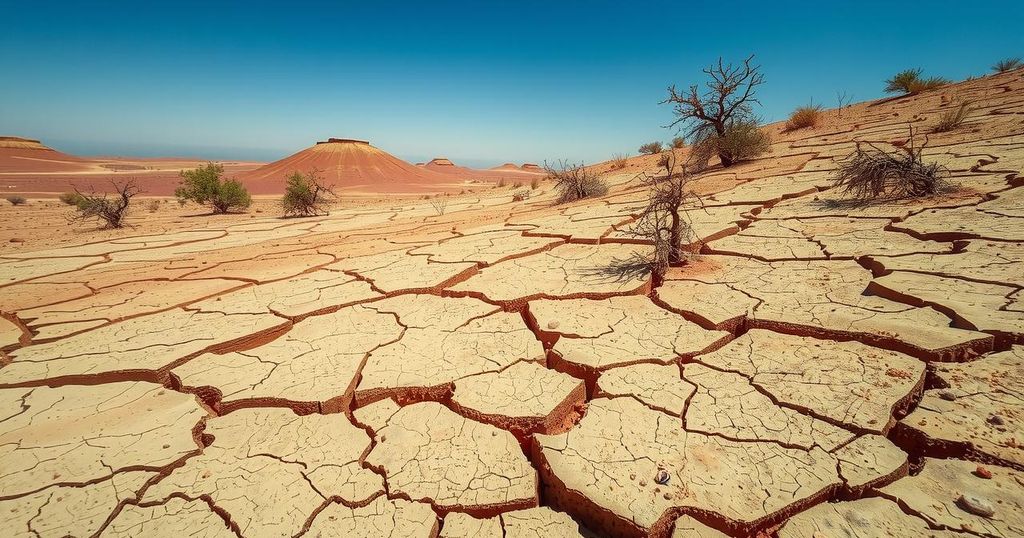Severe Heatwave Affects Large Parts of India, Rising Temperatures Recorded

A severe heatwave is currently affecting parts of India, with 27 weather stations recording over 43 degrees Celsius. Rajasthan’s Barmer reached 46.4 degrees Celsius, and temperatures in Gujarat and Maharashtra also soared. The IMD forecasts relief by mid-April, while climate change continues to exacerbate heat risks. Vulnerable populations face dangers as heat-related health issues rise.
A current heatwave is affecting significant areas of India, as reported by the India Meteorological Department (IMD), with 27 stations recording temperatures at or exceeding 43 degrees Celsius across Gujarat, Rajasthan, Maharashtra, and Madhya Pradesh. Among these, 19 stations experienced heatwave or severe heatwave conditions. The situation remains critical as temperatures continue to rise in these regions, impacting daily life.
In North and West India, parts of Delhi have also reported heatwave conditions, notably the Safdarjung Observatory at 41 degrees and Ayanagar at 40.4 degrees Celsius. Barmer in Rajasthan emerged as the hottest area, hitting 46.4 degrees Celsius, which is significantly higher than the average. Other locations in Rajasthan such as Jaisalmer, Chittorgarh, Bikaner, and Sri Ganganagar also recorded extreme temperatures, up to 7 to 9 degrees above the norm.
In Gujarat, major temperature spikes were noted, with Surendranagar at 44.8 degrees, Rajkot at 44 degrees, and Amreli at 43.8 degrees. Mahuva recorded a sharp increase of 8.3 degrees above normal temperatures. Similarly, in Maharashtra, Akola reached 44.1 degrees, while Guna and Ratlam in Madhya Pradesh reported 43.4 and 43.2 degrees Celsius respectively.
The IMD has indicated a potential easing of the heatwave by mid-April, with expectations of reprieve starting on April 10 for Northwestern India and April 11 for Gujarat and Madhya Pradesh. The IMD categorizes a heatwave when plain temperatures reach at least 40 degrees Celsius with temperature anomalies of 4.5 to 6.4 degrees Celsius above normal. A severe heatwave occurs with a minimum deviation of 6.5 degrees Celsius or when temperatures reach 45 degrees Celsius or above.
Climate change has been identified as a contributing factor to the increasing risks associated with heatwaves. Forecasts suggest persistently high temperatures from April to June, particularly affecting central and eastern India, as well as northern plains. Despite heatwaves usually occurring in summer months, earlier occurrences in February suggest a worrying trend related to climate conditions, which may intensify such events.
The impact of heatwaves is particularly severe on vulnerable populations, including those in low-income households with limited access to cooling resources. Outdoor workers face heightened risks of heat exhaustion and other related ailments. The World Health Organization (WHO) documented over 166,000 deaths caused by heatwaves globally between 1998 and 2017, with India alone accounting for 3,812 fatalities in heatwaves from 2015 to 2022.
The ongoing heatwave in India highlights critical climatic challenges, especially as many areas see temperatures rise significantly above normal. As temperatures are projected to remain high through mid-April, vulnerable populations are likely to face increased health risks. With climate change exacerbating these conditions, future strategies must prioritize relief for those affected while also addressing the broader causes of such extreme weather phenomena.
Original Source: www.thehindu.com







